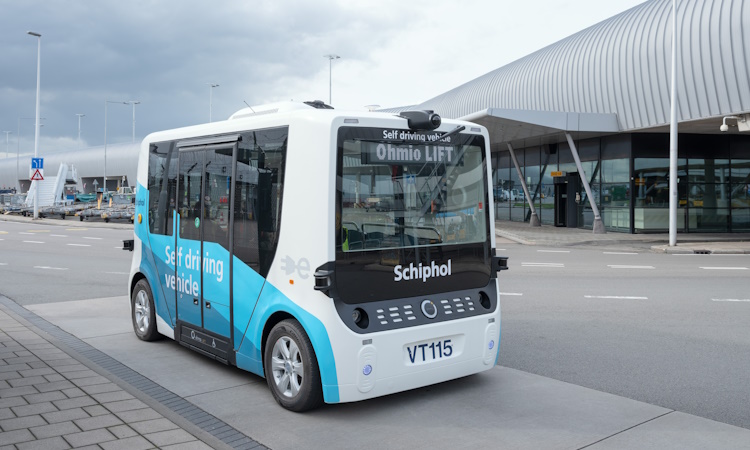
Schiphol is testing the use of electric autonomous buses. Two self-driving buses run a fixed route every day and make a number of stops on airside. The stops served by the buses are close to the offices of a number of cleaning and ground handling companies. This shuttle service is for employees who work in these locations. With this trial, the airport wants to investigate what the benefits of autonomous transport can be and how employees experience this. In the first phase of the trial, the technology behind the buses was thoroughly tested and adapted to the airport infrastructure. Currently, the shuttle service is used by employees and research is being conducted into how they experience self-driving transport. Of the employees who use the autonomous scheduled service, 89 percent are willing to use it again. Initial findings indicate that the service is perceived as safe and positive. The airport will continue to test the technology until the end of April and explore the potential possibilities for expansion. Schiphol is the first Dutch airport to use Ohmio’s technology, which develops autonomous vehicles, to transport people among other airside traffic. These so-called Automated Guided Vehicles are programmed to follow a fixed route that takes into account other road users, their position on the road and when they have to stop and/or give way to other traffic. The autonomous buses each have a capacity of eight people at a time. Employees can board from a staff passage that gives access to airside and get on and off at any location on the route. Each ride takes about five minutes. Schiphol aims to be the most sustainable and high-quality airports in the world by 2050. Building a more sustainable and emission-free soil operation contributes to this. Royal Schiphol Group envisages that by 2050 all vehicles will have been replaced by a continuous fleet of autonomous, zero-emission vehicles and all associated processes will be automated. Even in an autonomous ground operation, the employee continues to play an important role. The work will be more directing and with varied tasks. (Photo Roger Cremers/Schiphol).